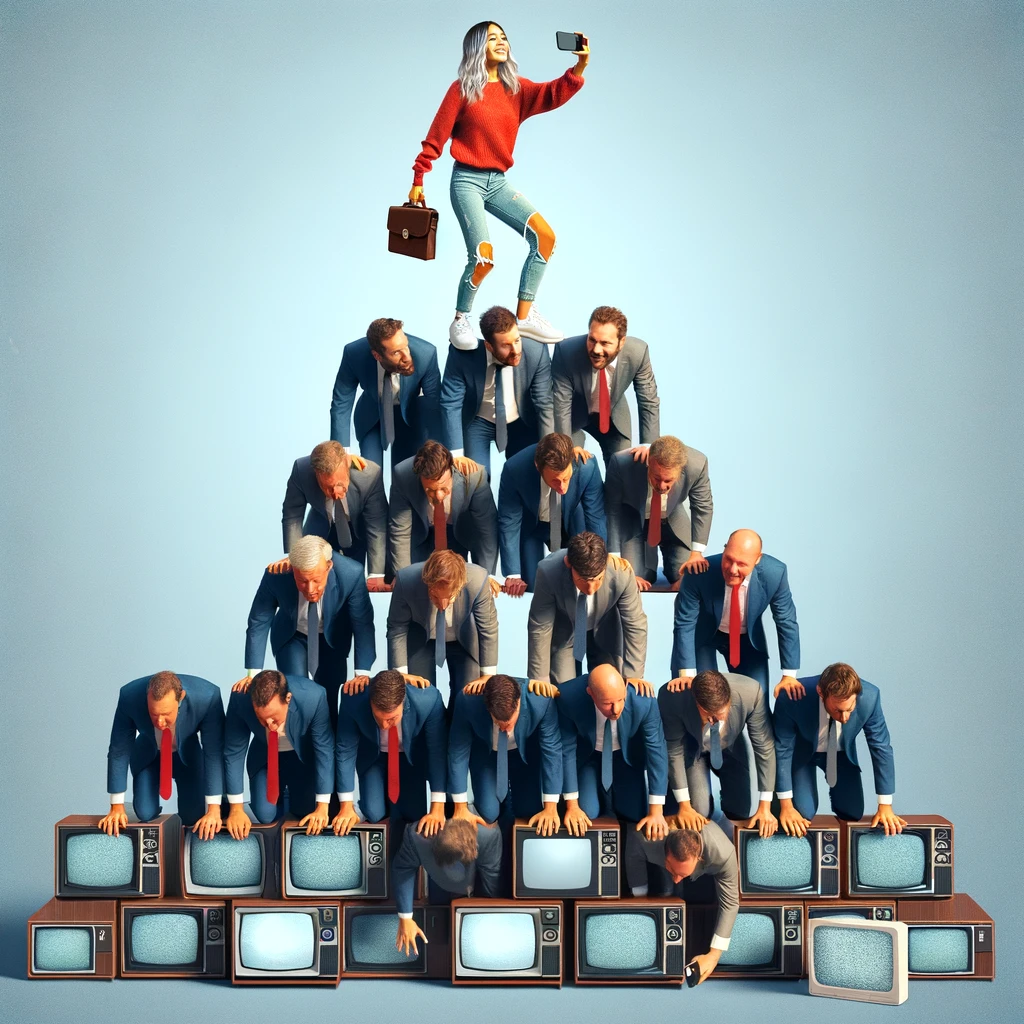The entertainment industry finds itself at a crossroads. Legacy media giants turn to corporate machinations to grapple with declining viewership and increasingly outdated business models, while audiences flock to engaging, high-quality content produced outside the traditional Hollywood system. To quote a recent article by Richard Rushfield in The Ankler: “The history of entertainment will never be written by transactions and deals, and the audience hasn’t declared that they are ready to pack it in yet.”
While industry prognosticators these days tend to focus on mergers, acquisitions, and financial maneuvering, they ignore a fundamental question: how can legacy media companies adapt to changing audience tastes and provide content that resonates at a sustainable cost? The answer lies not in mergers and acquistions, but in a return to storytelling fundamentals – creator-driven content.
The Rise of Creators and the Redefinition of Quality
Audiences today are more discerning than ever. They’ve embraced a new wave of content creators who deliver fresh narratives, innovative formats, and a level of authenticity often lacking in traditional studio productions. These creators, with their finger on the pulse of what resonates with their fans, are redefining the very definition of “quality” (in the Clayton Christensen sense of the word).
The Power of Creator-Driven Content
Creator-driven content offers several advantages over traditional studio productions:
- High Engagement: Creators build passionate communities around their unique style and vision. This translates to highly engaged audiences who actively seek out and consume their content.
- Lower Production Costs: Creators often operate with lean teams and utilize readily available technology, resulting in content creation at a fraction of the cost of the traditional Hollywood studio model.
- Authentic Storytelling: Creators, given the right tools, have the talent and freedom to explore diverse voices and perspectives, leading to more authentic and relatable storytelling that resonates with viewers.
A Marriage of Innovation and Distribution
Legacy media companies possess a valuable asset: established distribution platforms with robust monetization models. By partnering with creators, they can leverage this infrastructure to deliver high-quality, audience-driven content at a sustainable cost.
Imagine a future where platforms that have worked hard to build reach and engagement around premium content models offer a curated selection of engaging creator-driven content alongside traditional studio productions. This approach would cater to a wider and more diverse range of audience preferences, leading to increased subscriptions, viewership and overall engagement.
Beyond Denial: Embracing the Change
The road to recovery requires a shift in mindset for legacy media companies. They have to get past denial, bargaining, and anger, acknowledge that the process forward will be uncomfortable, and accept that the model going forward will look different from the model looking backward. To reflect a hallmark of any meaningful trajectory of growth, what got media here is not what will best serve them going forward.
Instead, a strategic focus on creator partnerships offers a more promising path forward. By embracing creator-driven content, legacy media companies can:
- Rejuvenate Content Libraries: Fresh, engaging content attracts new audiences and revitalizes existing ones, breathing new life into outdated libraries.
- Enhance Brand Image: Partnering with diverse creators fosters a reputation for innovation and a commitment to quality storytelling, aligning with audience expectations.
- Build Stronger Fan Communities: By empowering creators and their audiences, legacy media companies can foster a sense of community and loyalty, fostering long-term engagement.
A Brighter Future for Entertainment
The entertainment industry is not on life support. The audience, as Richard Rushfield rightly points out, remains enthusiastic and eager for compelling stories. By embracing creator-driven content and forging a symbiotic relationship with independent creators, legacy media companies can reclaim their position as leaders in entertainment. This is not just about financial sustainability – it’s about fostering innovation, celebrating fresh voices, and delivering the kind of content that keeps audiences glued to their screens. The biggest question is: Who will have the courage, in service of fans and audiences, to put aside the bedrock principles of an old model in favor of the new paradigm?
